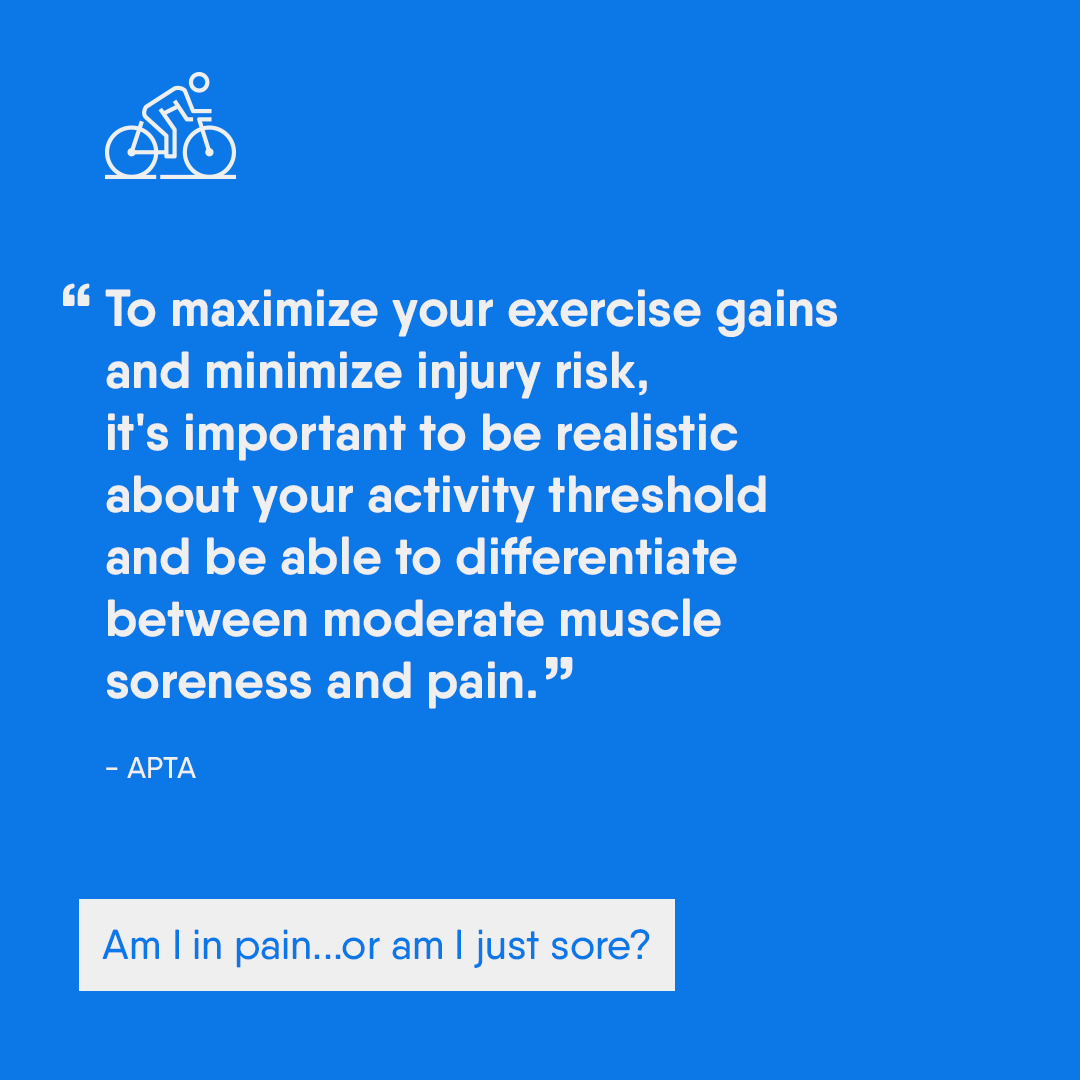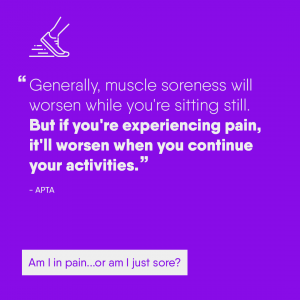There is soreness, and then there is pain. It’s important to not confuse the two.
To active people and athletes of all levels, the inability to recognize the differences between muscle soreness and pain can mean pushing your body – your muscles and joints – to the point of injury. It’s the difference between healthy progress and unnecessary, long-term risk.
Central Oregonians are no strangers to being active. Whether you are taking a weekend hike at Tumalo Falls, commuting to work on your bike, or simply like working the soil in your garden, adopting the theory of ‘no pain, no gain’ isn’t always the wisest choice. It’s one thing if you get a little sore — this happens — but if you’re dealing with pain, you need to find out what’s causing the discomfort. Pushing through the pain could only cause long-term damage to your body.
So how can you tell soreness from pain? The answer’s simple, listen to your body.
Here are some of the signs that you’re experiencing pain – not simply soreness — and should seek the advice of a physician or physical therapist:
Pain is Sharp: Sharp, intense pain that you experience when exercising and at rest can be classified as pain. In contrast, sore muscles tend to feel tight and achy when at rest. During exercise, sore muscles will feel “burning” and fatigued.
Pain is associated with inflammation: The burning feeling should be felt in the muscles, however, if the part of the body where you feel discomfort is swollen or warmer to the touch, that’s a sign of inflammation which is beyond simple soreness.
Pain in the Joints: Soreness is a muscular thing. Though muscle discomfort can also cross the line into pain, discomfort in the joints is less ambiguous.
If you feel symptoms in a particular joint or you’re struggling with activities that were previously easy, like getting up from a chair or walking up/down stairs, it’s time to seek professional advice. Joint pain often presents with limited range of motion or flexibility and worsens with activity.
Pain continues after “warming up”: If the discomfort you feel doesn’t go away after you’ve warmed up for your workout or event, you’ve potentially crossed the line into pain.
For example, when you’re running and the second mile hurts the same as when you walked out the door that morning, you’re dealing with pain. General soreness – even a stiff joint – should improve through use.
If soreness persists and seems to linger, apply R.I.C.E., a popular acronym that takes you through the steps of Rest, Ice, Compression and Elevation. Then re-evaluate the way you feel. If the hurt doesn’t improve or subside, you may be dealing with pain. Time to seek the advice of an expert, such as a physical therapist.
With proper exercise training and even a little rest, most soreness eventually goes away as your body becomes conditioned to a particular activity, however if the pain persists, seeking care quickly from a medical expert lessens the chance the potential injury will worsen and the sooner you will be back to doing the activities we all enjoy here in Central Oregon!
About Alpine Physical Therapy
Through carefully crafted orthopedic sports medicine, spine care, and women’s health programs, the Alpine Physical Therapy staff is proud to have offered the Bend, OR community a comprehensive approach to physical therapy since 2005. For more information, visit alpinephysicaltherapy.com.


I appreciate this information! Keep them coming!! Hi to Ron! Karen